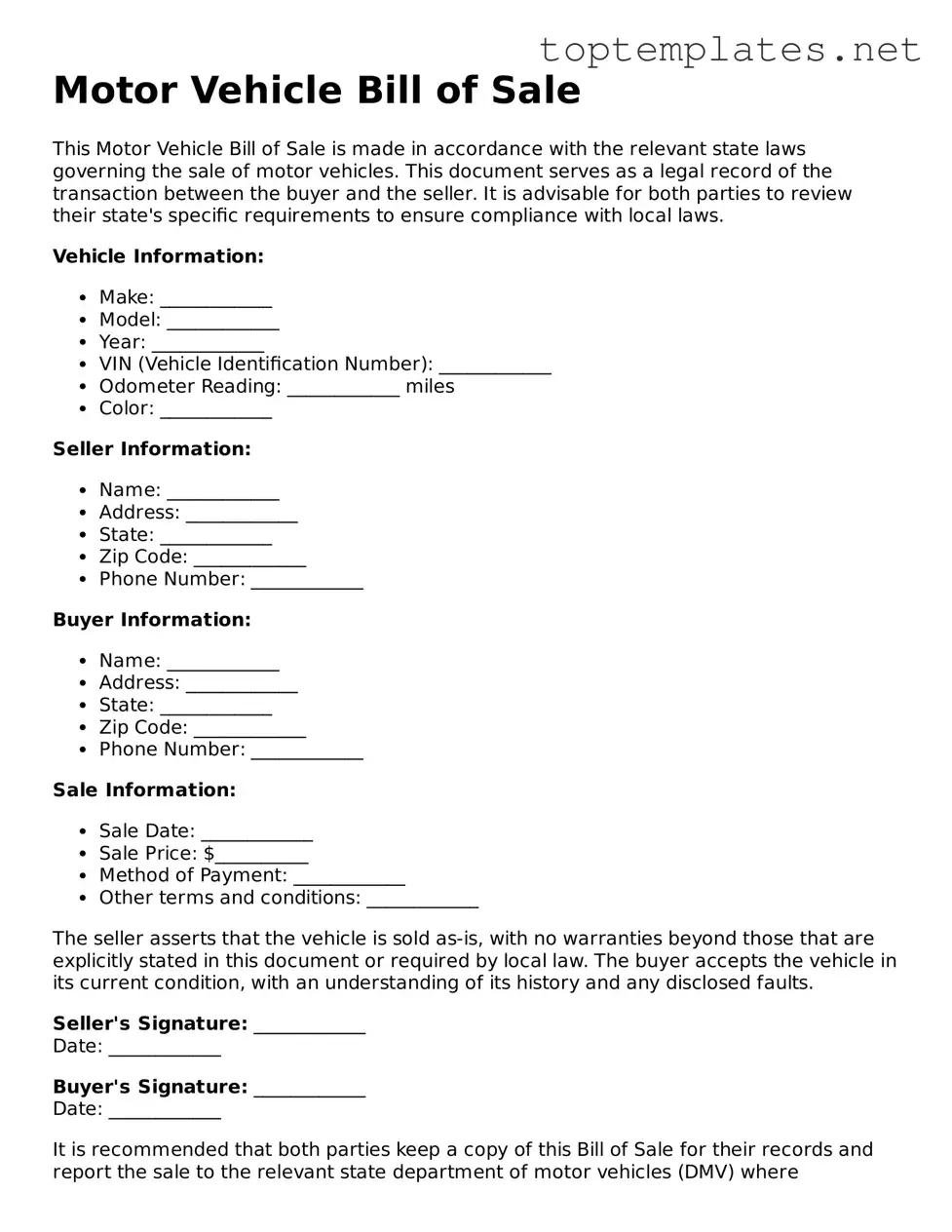What is a Motor Vehicle Bill of Sale?
A Motor Vehicle Bill of Sale is a legal document that records the transaction between a seller and a buyer of a motor vehicle. It serves as proof of purchase and demonstrates the transfer of ownership from the seller to the buyer. This form usually includes details about the vehicle such as its make, model, year, VIN (Vehicle Identification Number), and the purchase price, along with the names and signatures of both parties involved.
Why do I need a Motor Vehicle Bill of Sale?
Having a Motor Vehicle Bill of Sale is crucial for several reasons. First, it legally documents the sale and purchase of the vehicle, providing a record that the transaction occurred. Second, it is often required by the DMV (Department of Motor Vehicles) for registration and titling purposes. Lastly, it protects both the buyer and seller from potential disputes in the future by detailing the condition of the vehicle and the terms of the sale.
What information should be included in a Motor Vehicle Bill of Sale?
A comprehensive Motor Vehicle Bill of Sale should include the full names and addresses of both the seller and the buyer, a description of the vehicle (including make, model, year, color, and VIN), the sale price, the date of the sale, and any other terms or conditions of the sale. It should also contain a statement affirming that the vehicle is being sold 'as is,' unless the seller has agreed to guarantee its condition. Additionally, both parties should sign and date the document, possibly in the presence of a witness or notary public.
Is a witness or notary necessary for a Motor Vehicle Bill of Sale to be legally binding?
While not always required, having a witness or a notary public sign the Motor Vehicle Bill of Sale can add a layer of protection and authenticity to the document. The requirements vary by state, so it’s essential to check local laws. In some states, a notarized Bill of Sale is necessary to register the vehicle, whereas, in others, it may not be mandatory but is still recommended.
Can I create my own Motor Vehicle Bill of Sale?
Yes, you can create your own Motor Vehicle Bill of Sale. Many templates are available online that meet the general requirements for such a document. However, it’s important to ensure that the Bill of Sale includes all necessary information and complies with your state’s specific regulations. For complete assurance, you might consider consulting with a legal professional or utilizing resources provided by your local DMV.
What should I do after completing a Motor Vehicle Bill of Sale?
After completing the Motor Vehicle Bill of Sale, both the buyer and seller should keep a copy for their records. The buyer will need the Bill of Sale for registering the vehicle in their name at the DMV. Additionally, it's wise to report the sale to the DMV as soon as possible and check if any other steps are required for the transfer of ownership to be officially recognized in your state.
